
M.F. Husain, India's Modernist Master
Maqbool Fida Husain (Indian, 1915-2011), often called the “Picasso of India,” was one of India’s most prominent modern painters and a founding member of the Progressive Artists’ Group.
Few Indian artists have carried the weight of public attention like Husain. For decades, he painted with a passion and sense of uniqueness that turned familiar Indian symbols such as gods, goddesses, mothers and horses, into something unmistakably modern. His language was always visual first: sweeping strokes, vivid colour and a rhythm that felt both ancient and new. Even now, long after the initial waves of protest and exile, his work continues to surface in exhibitions and auctions, inviting new viewers to look again and decide what they really see.
Controversy and Relevance Today
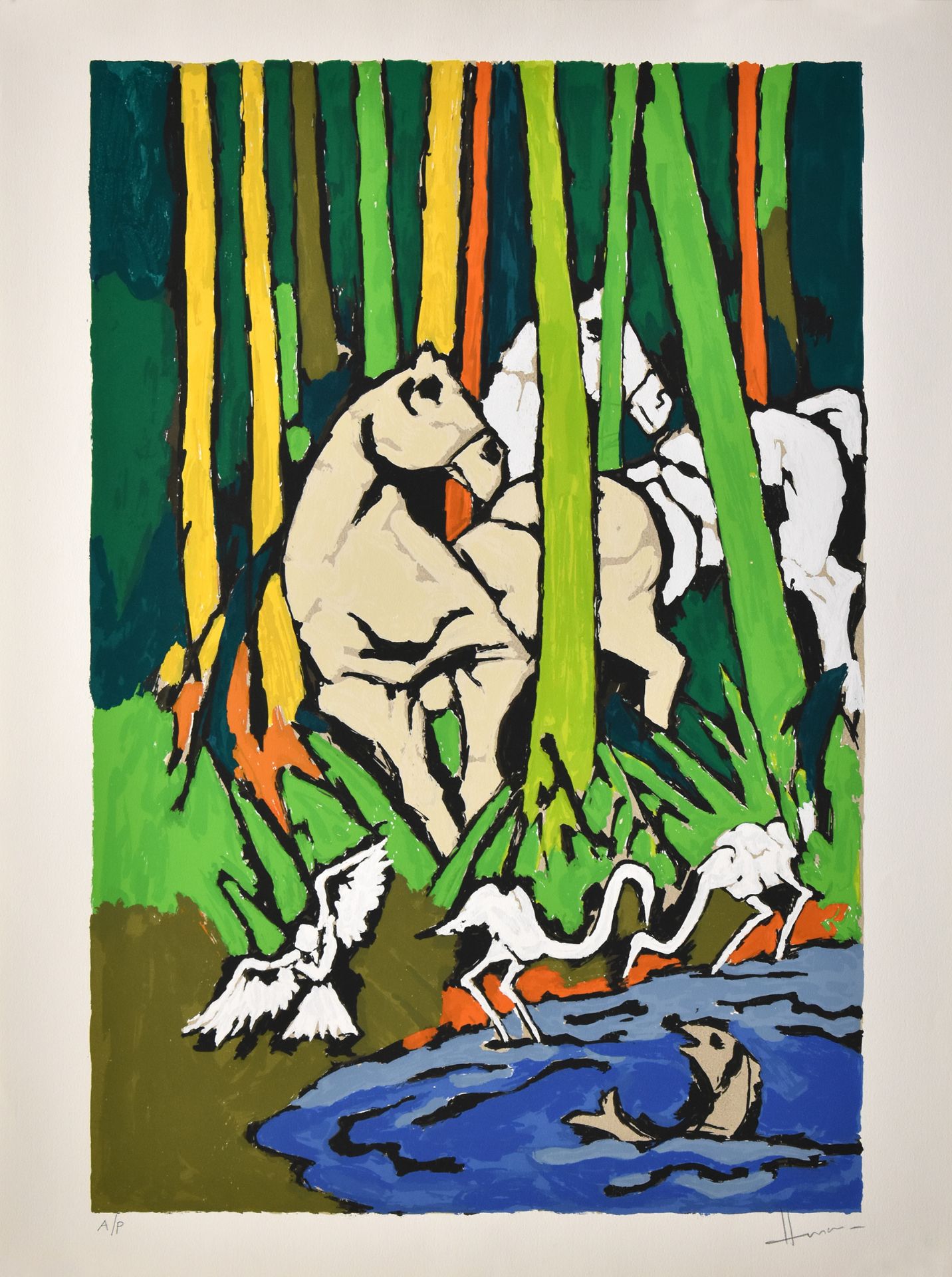 |
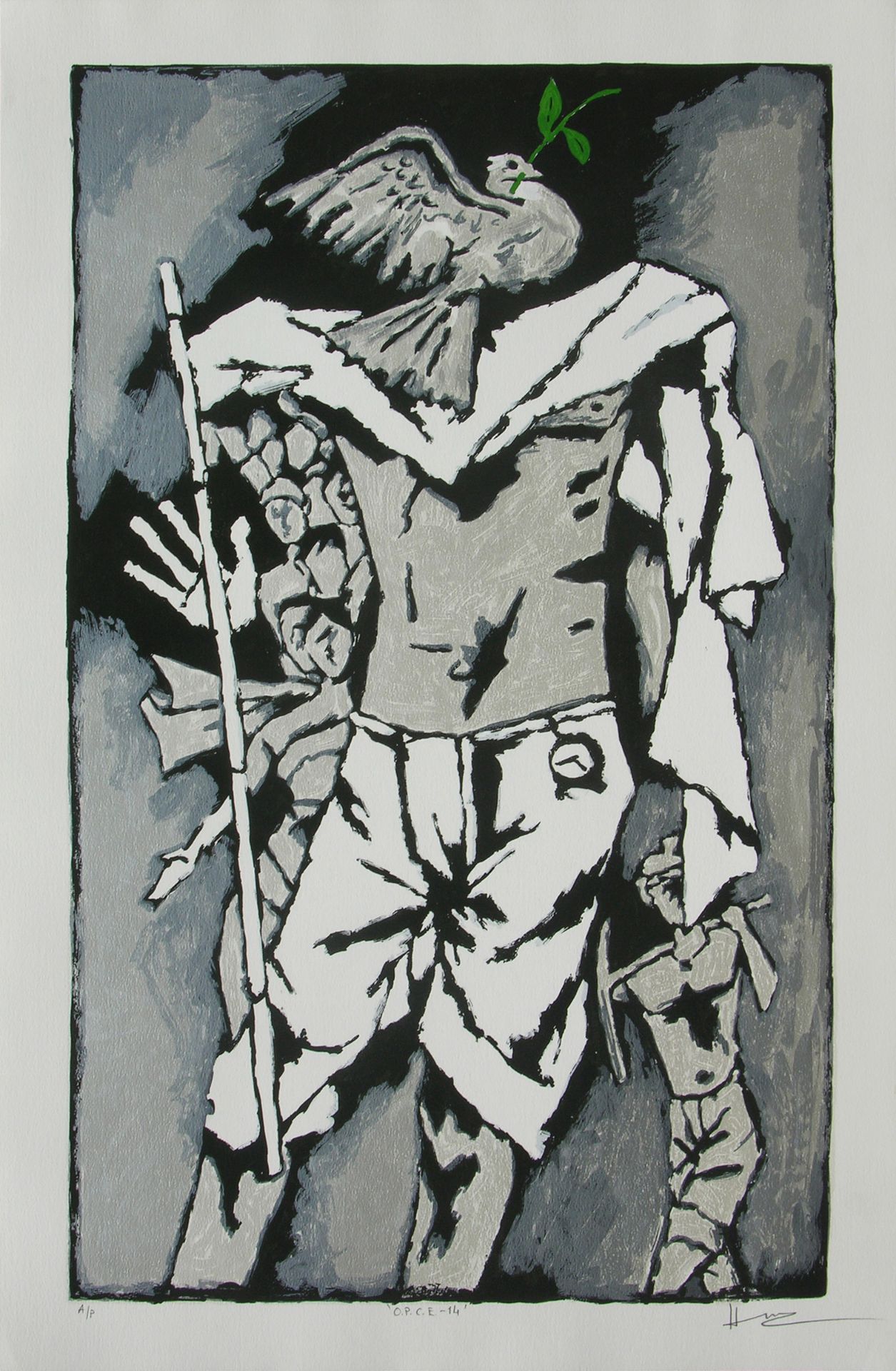
|
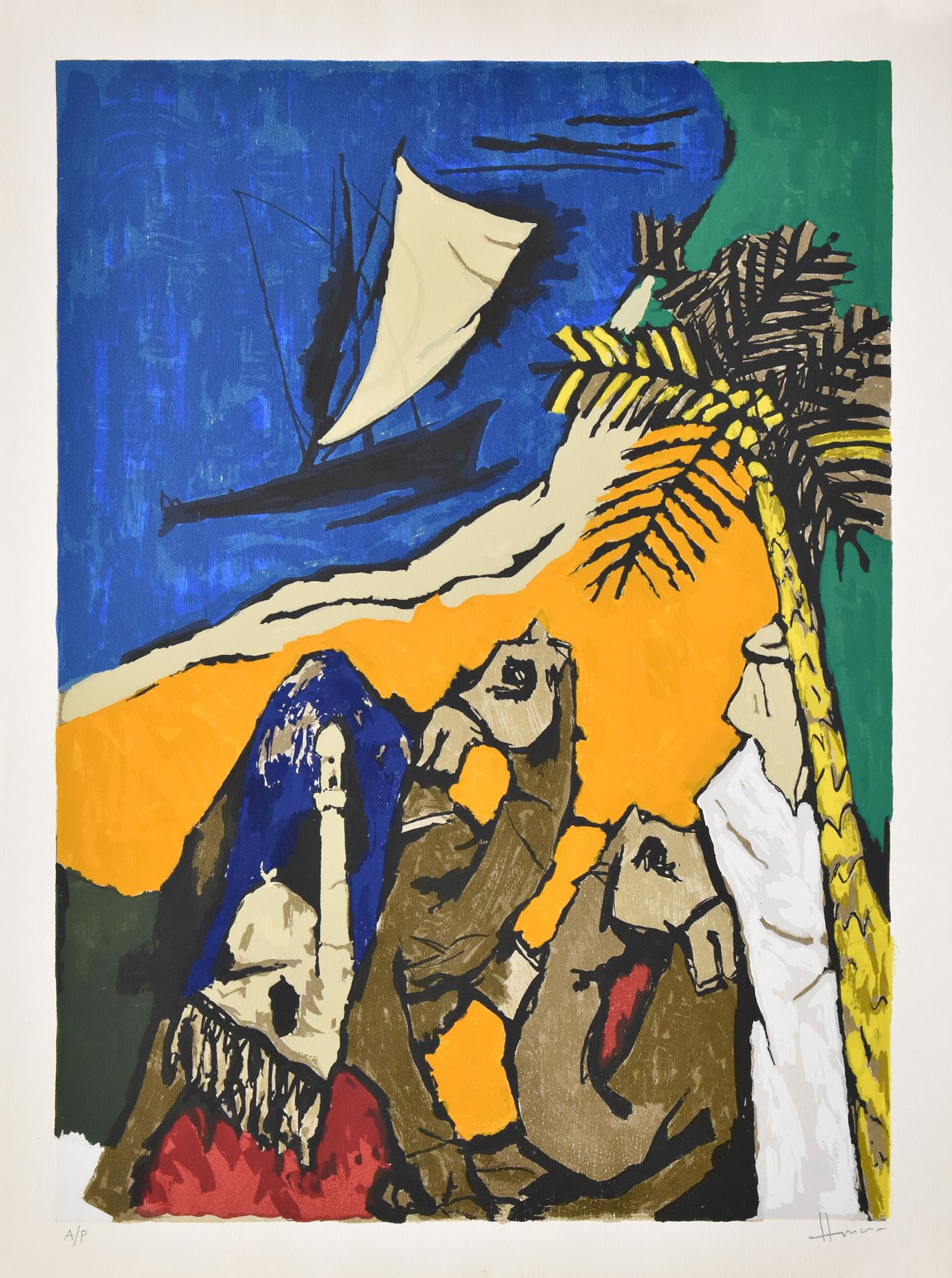 |
| M.F. Husain, OPCE 6 | M.F. Husain, OPCE 14 | M.F. Husain, OPCE 7 |
In 2004, Husain began what he called Our Planet Called Earth (OPCE), a planned series of one hundred paintings that would trace the story of the twentieth century through his eyes. He completed twenty-five canvases before the project was interrupted. The commission came from Lucknow businessman Guru Swarup Srivastava, but when his company defaulted on a loan from the National Agricultural Cooperative Marketing Federation of India (NAFED), the paintings became collateral in a financial dispute.
NAFED seized the paintings and stored them in bank vaults in Mumbai for nearly two decades. In 2025, after clearance from the Bombay High Court, the twenty-five works were finally released for auction in Mumbai under the title M.F. Husain: An Artist’s Vision of the XX Century, achieving a combined sale value of about ₹68.5 crore. The case also drew attention because Srivastava and several associates had been charged by the Central Bureau of Investigation for fraud and misuse of funds linked to the NAFED loan.
The Festival of Light, and What Husain Saw in It
Although Husain never painted Diwali as a subject in the literal sense, many of his canvases echo the spirit of the festival. His use of golds, reds and luminous yellows play between shadow and flame; along with the sense of movement and gathering, all capture the atmosphere of light against darkness, of renewal and celebration.
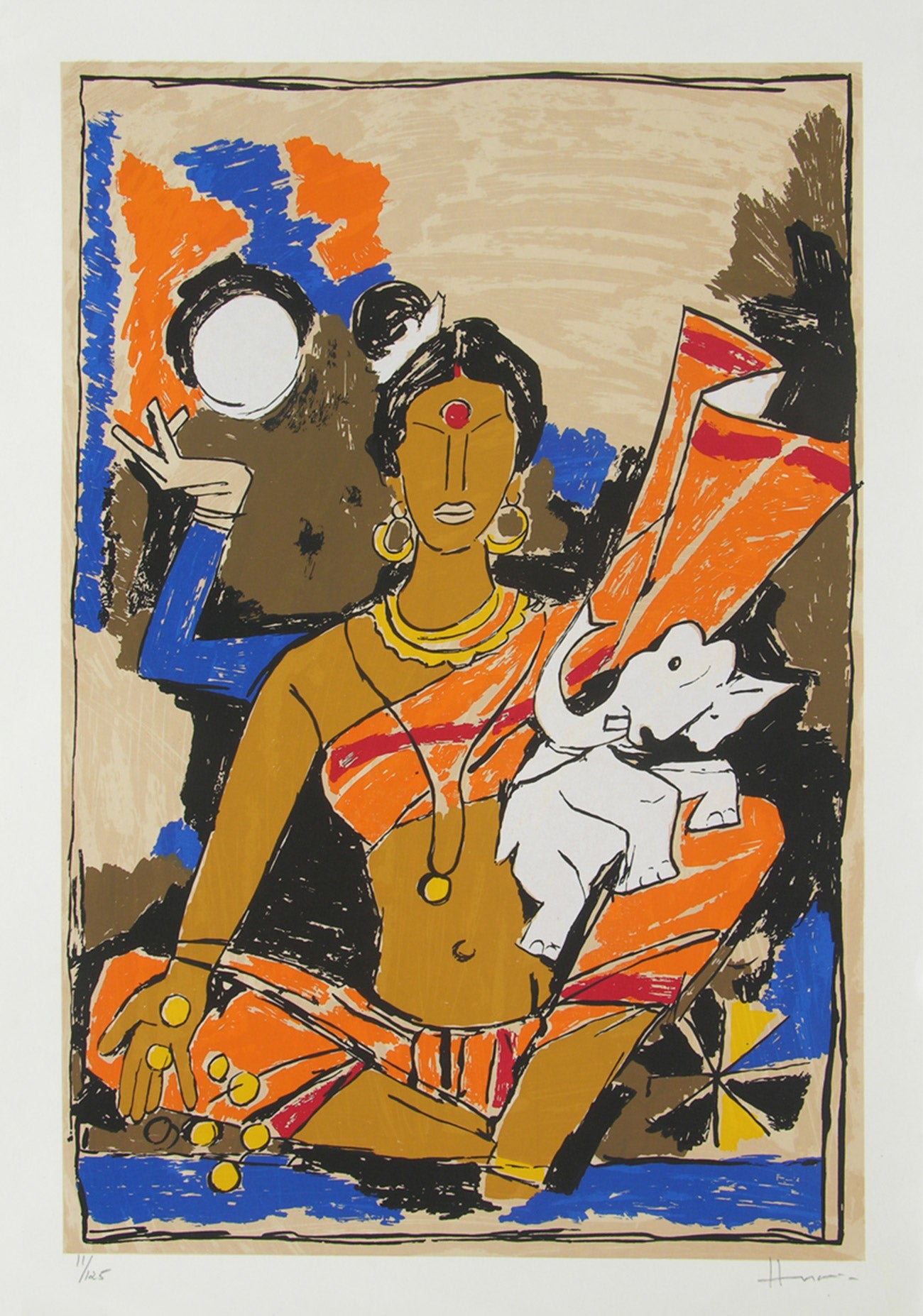 |
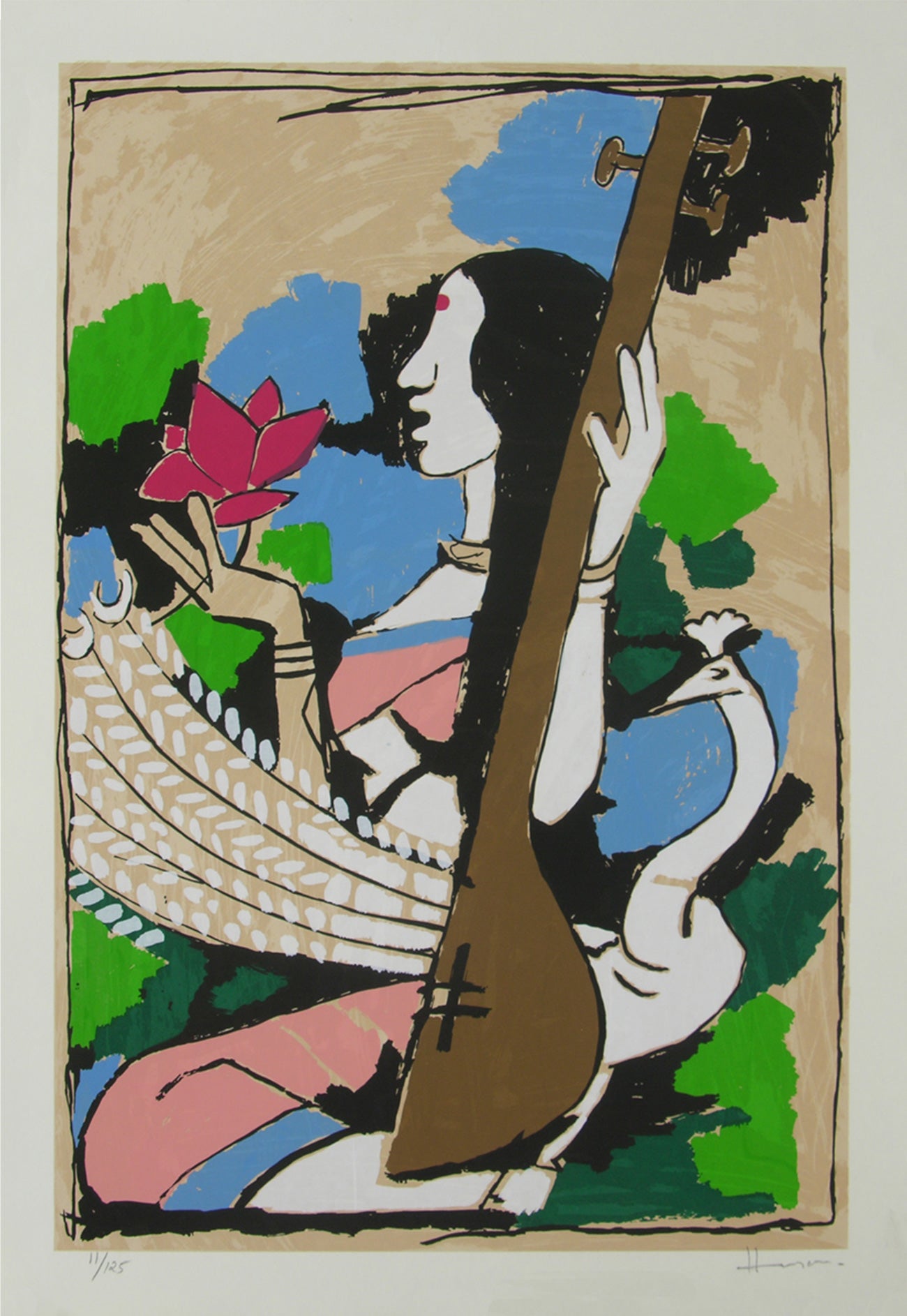
|
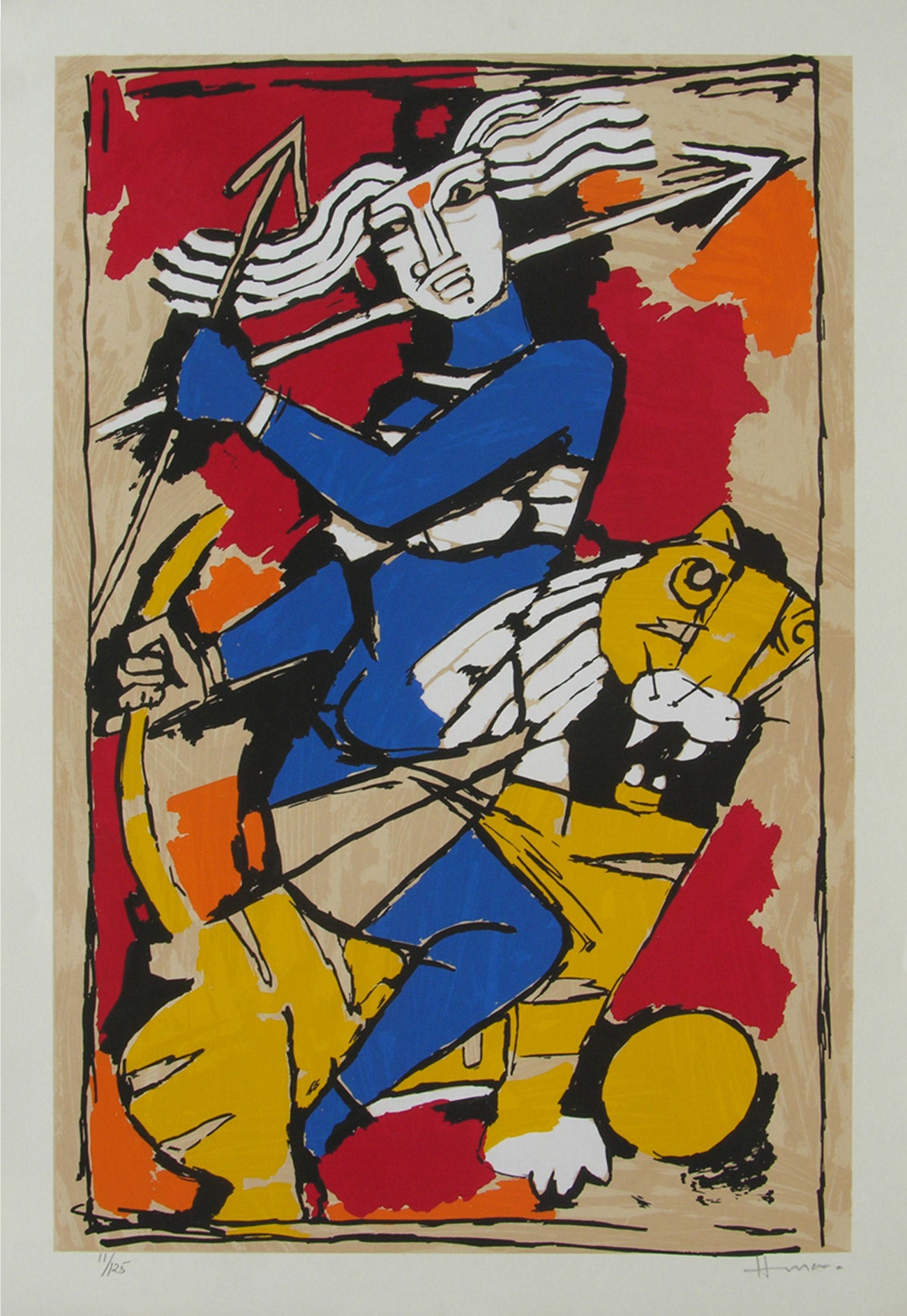 |
Left to right: Serigraphs depicting Hindu goddesses Laxmi, Saraswati and Durga by Husain
(from Artisera - https://www.artisera.com/blogs/expressions/remembering-m-f-husain-an-undisputed-master-of-indian-modern-art)
In several of his works featuring Lakshmi, the goddess of wealth and good fortune traditionally worshipped during Diwali, Husain presents her not as a distant deity but as a living, dynamic force. She often appears alongside motifs of the lotus or the elephant, symbols of abundance and wisdom, while also being rendered in flattened planes and angular forms.
Elsewhere, his paintings of women lighting lamps or families in village courtyards carry the same warmth. They widely portray his idea of home, where light, in his world, is never just physical illumination.
Mythology and the Modern Eye

M.F. Husain, Sita Hanuman, 1979
For Husain, mythology was not a subject to illustrate but a language to reinterpret. To him, it was as if Indian myths were the greatest stories ever told and he painted them as if they were still unfolding. His Sita Hanuman (1979) reimagines the Ramayana rescue scene through angular, overlapping figures that seem to move in and out of abstraction. In his many depictions of Durga, Parvati and Saraswati, the goddesses are powerful but humanised. Their strength and grace coexist with vulnerability.
These paintings connect naturally to the themes of Diwali, the triumph of light over darkness, good over evil, but Husain never treated these as simple moral tales. He turned them into visual meditations on faith, beauty and the place of myth in modern life. Even his recurring image of the horse, often set against fiery backdrops, can be read as a symbol of energy and divine motion, echoing the chariots of gods or the restlessness of creation itself.
The Controversies and the Questions They Left Behind
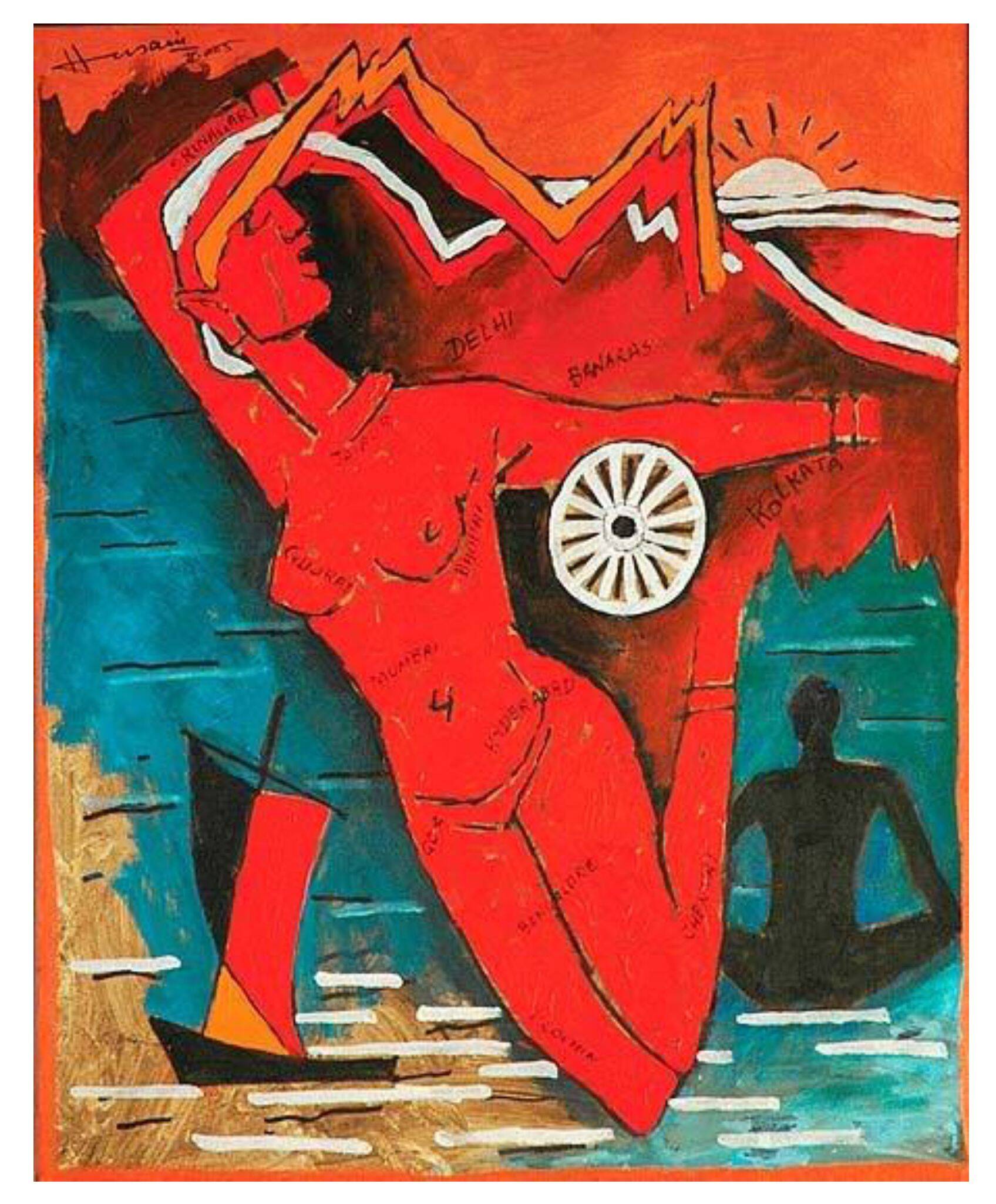
Husain’s engagement with myth and religion also led to the most turbulent chapter of his life. In his late 1990s and 2000s, several of his works depicting nude goddesses and his Bharatmata painting drew accusations of obscenity and hurt religious sentiment. Protests escalated, exhibitions were withdrawn and multiple court cases followed. Eventually, the Delhi High Court dismissed the charges, recognising them as unfounded, but the damage was done, Husain lived much of his later life abroad, effectively in self-exile.
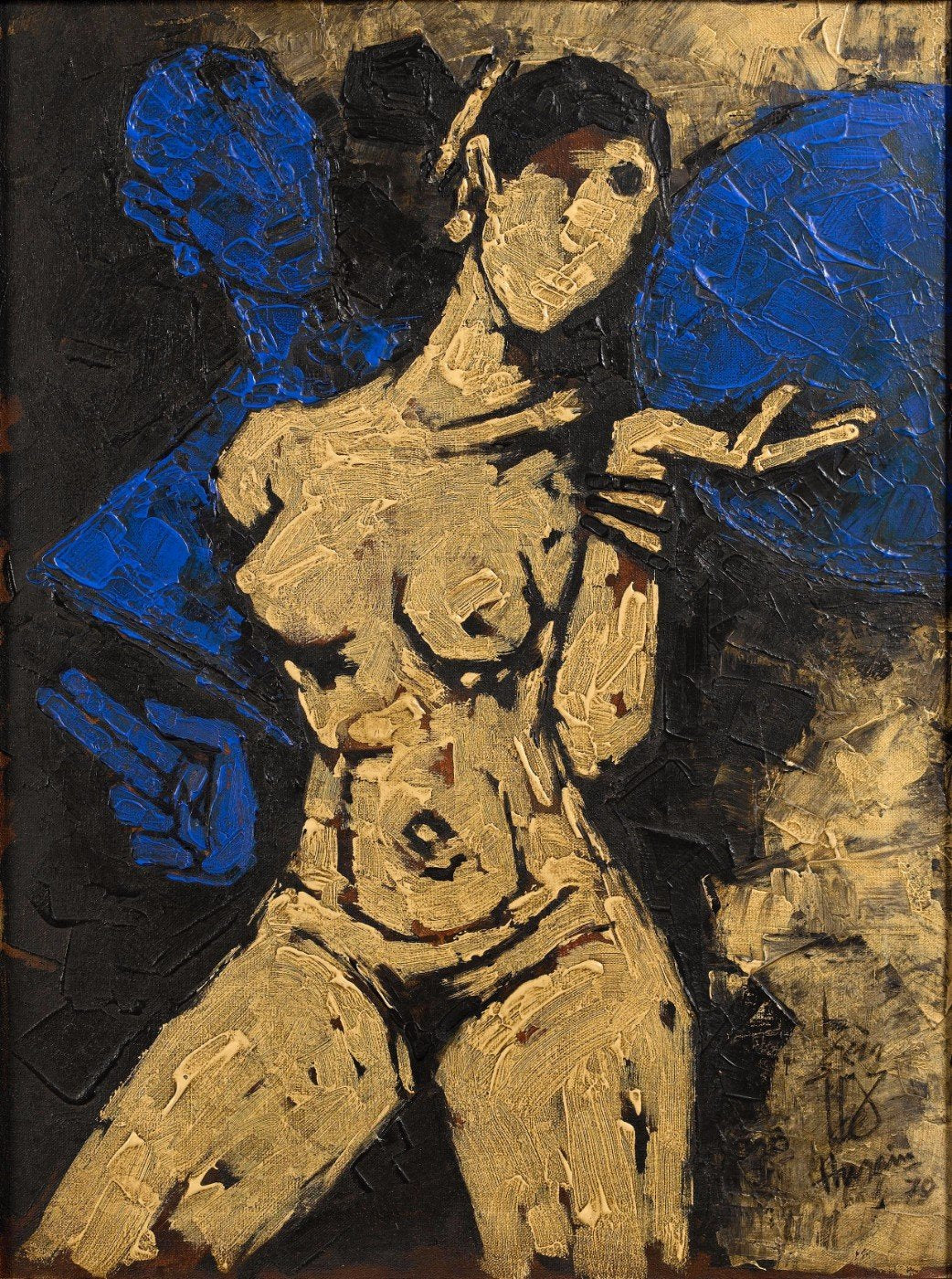
M.F. Husain, Female Nude, 1979
What is often missed in the noise is the intent behind those works. Husain did not paint to provoke. Instead, he painted as someone who saw divinity and beauty in all forms. His goddesses were not desecrations but embodiments of strength and spirit. Yet, in a society where religious imagery remains deeply personal, his modernist approach unsettled many.
The debate surrounding his work became less about art and more about who controls meaning, a question that still feels relevant today. In hindsight, those years of controversy now read as part of a larger national conversation about artistic freedom, faith and the uneasy space between tradition and modernity.
The Lost Artwork

M.F. Husain, Untitled (Gram Yatra, 1954)
Another of Husain’s major works, Untitled (Gram Yatra), tells a different story of movement, this time across borders. Painted in 1954, the large canvas consists of thirteen vignettes showing scenes of rural Indian Life. It was purchased that same year by Dr Leon Elias Volodarsky, a Norwegian surgeon working in New Delhi with the World Health Organisation.
After Volodarsky’s death, his estate donated the painting to Oslo University Hospital, where it hung in a corridor for decades. In March 2025, the hospital decided to auction it through Christie’s in New York to fund medical training programmes. The sale reached USD 13.8 million (around ₹118 crore), setting a record for modern Indian art at a public auction.
Light That Endures
To look at Husain’s work now is to recognise how it remains woven into India’s visual memory. His horses still gallop through our imagination; his goddesses still command both devotion and debate. The glow of his colour, fierce and unrelenting, carries a familiar warmth.
For all the arguments that surrounded him, Husain’s art continues to ask one enduring question: how can we hold on to our myths and still see them anew? Perhaps that, more than anything, is the real light his work offers. One that never quite goes out.
Written by
Brenda Chak
Take a look at the Indian and Indian diasporic artworks available on our site.
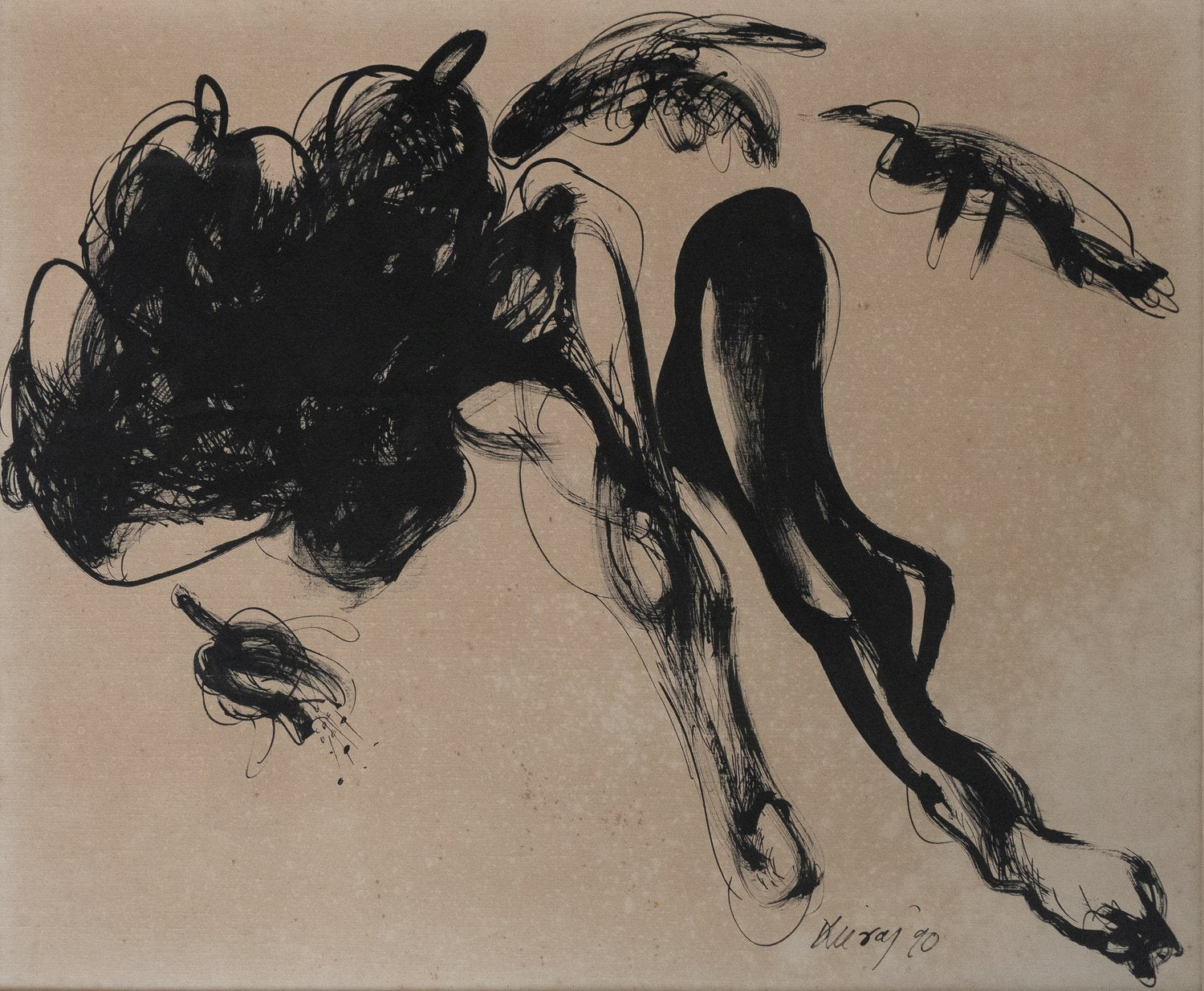
Dhiraj Choudhury, Stag, 1990
Acrylic on paper
SGD 800
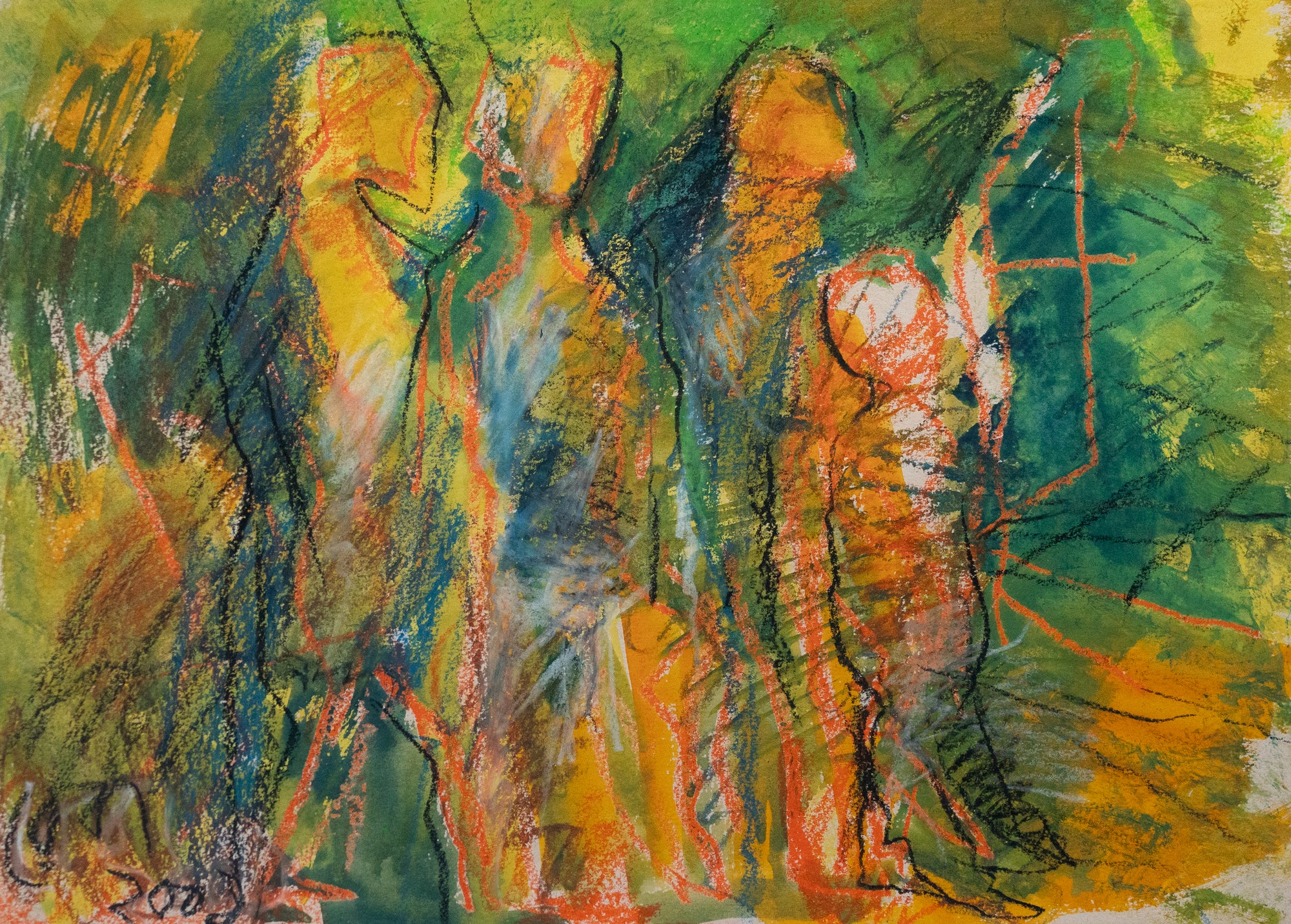
Reba Hore, Untitled (People), Undated
Watercolour and oil pastel on paper
SGD 4,500
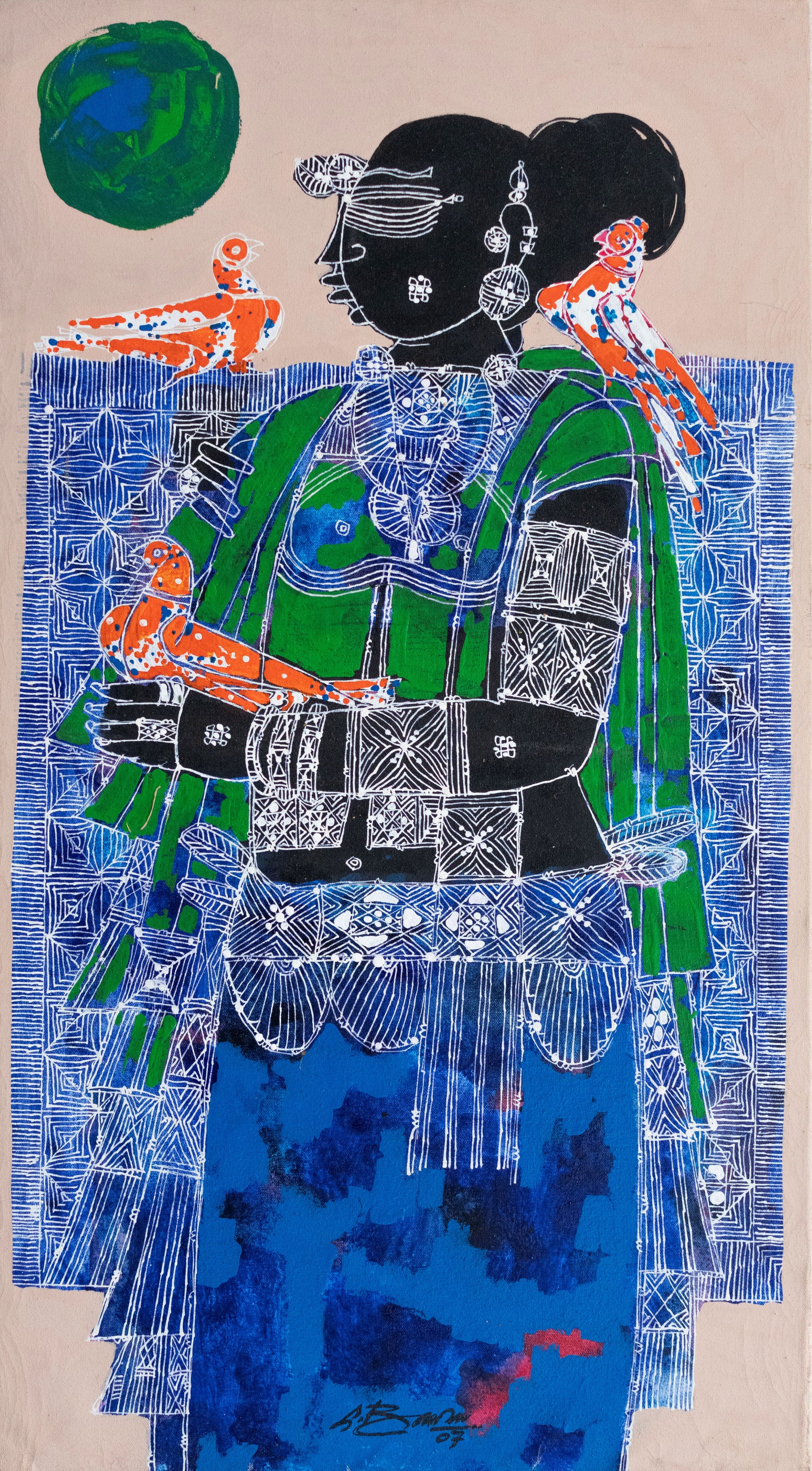
G. Raman, Lady with Parrots, 2007
Acrylic on canvas
SGD 1,000
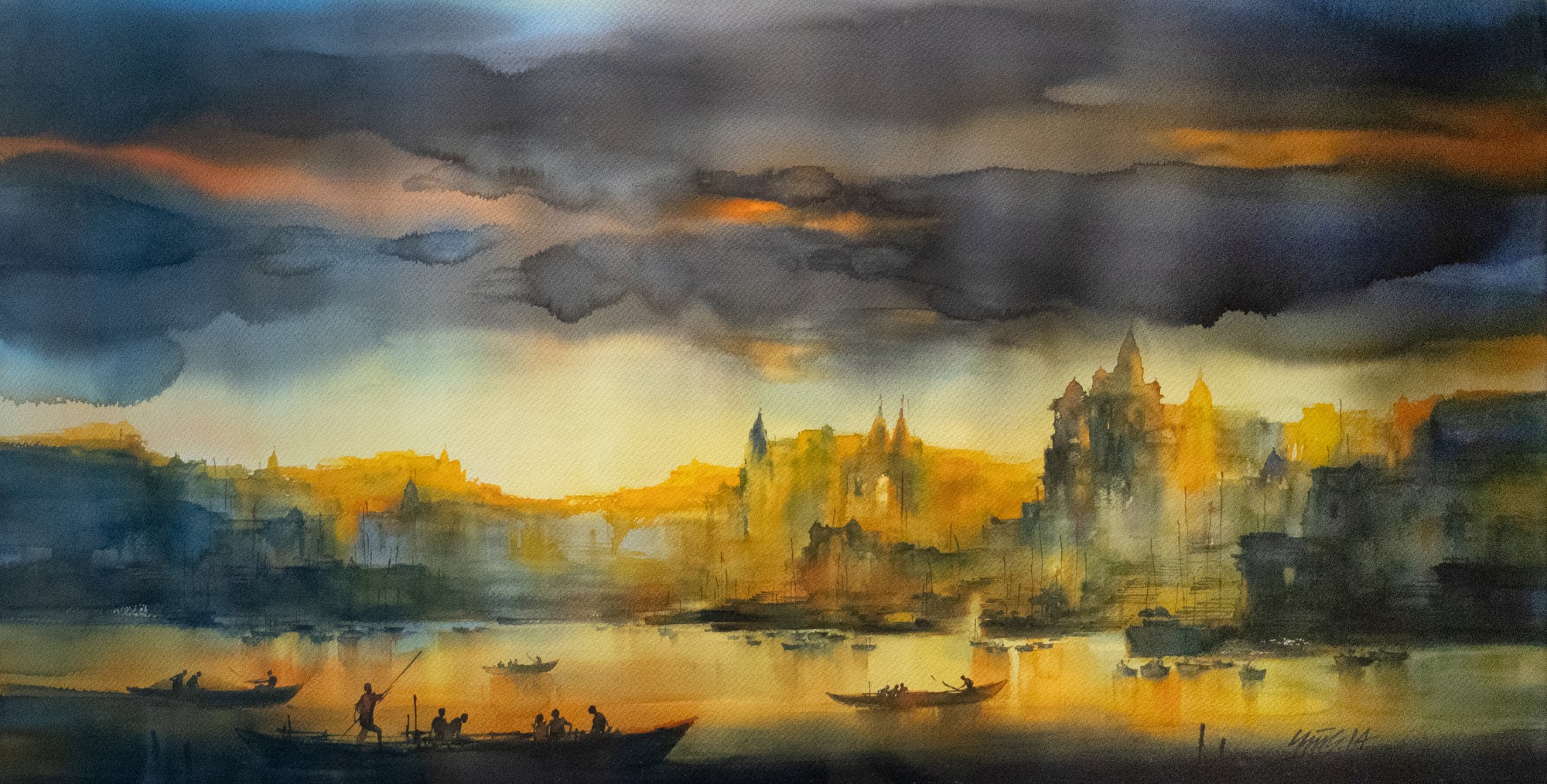
Pramod Kumar, Benaras, 2014
Watercolour on paper
SGD 15,000
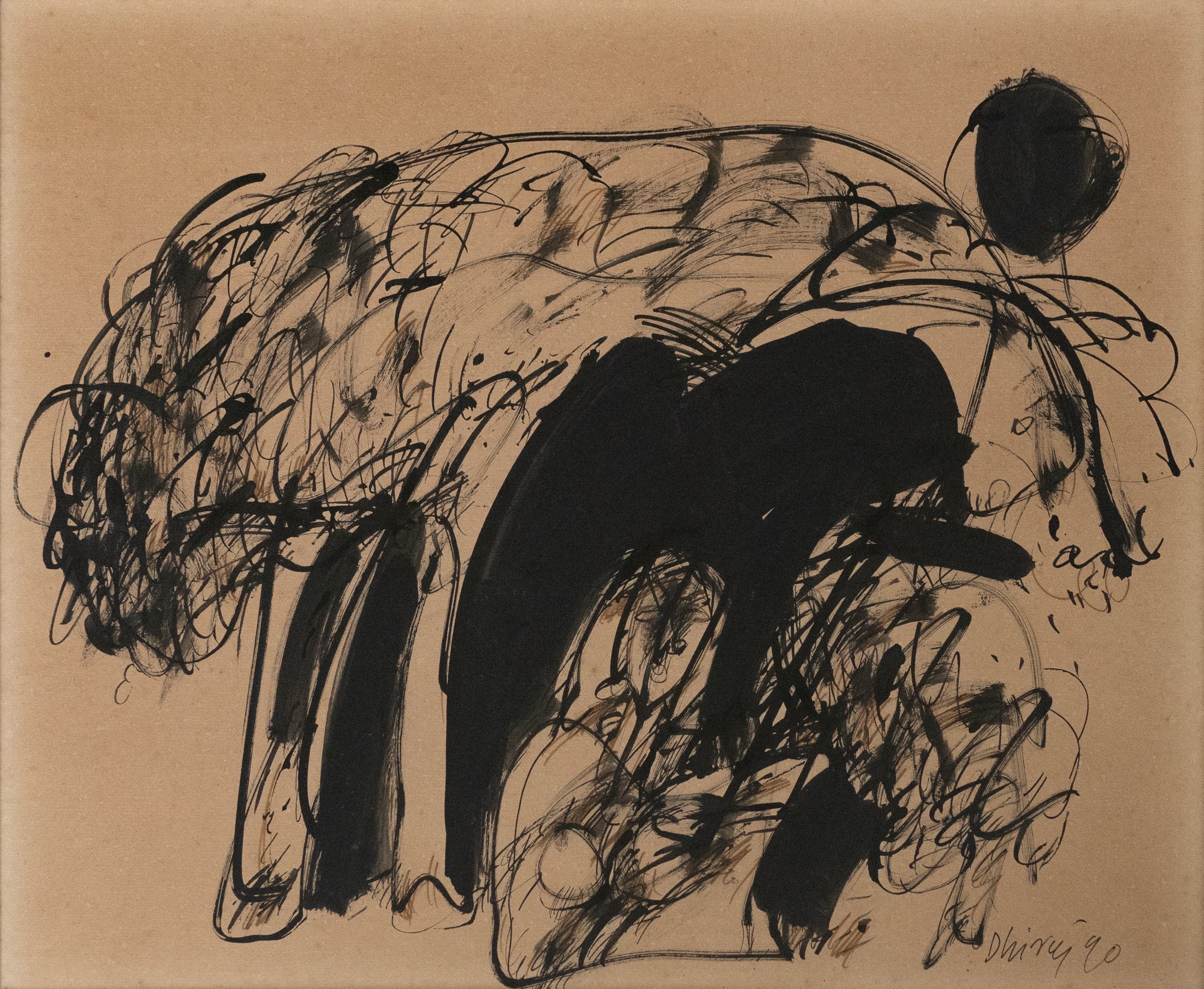
Dhiraj Choudhury, Untitled (Boy and Horse), 1990
Acrylic on paper
SGD 800
|
If you enjoyed this blogpost, consider buying me a coffee. Please scan the QR code here >>
What is "buy me a coffee"? Buy Me a Coffee is a way for people to tip or say thank you to content creators and creatives.
Also you didn't ask but here're our preferred coffee orders:
|
 |